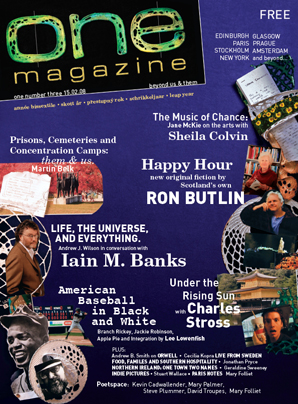First, my thanks to Mr Stephen Waddington for flagging Antony Mayfield’s e-book, Brands In Networks.
As Wadds says “publishers, journalists, PRs and marketing professionals that are looking for a pragmatic analysis of the fragmentation of the media industry should download the 50-page eBook immediately.”
I agree. The book covers a huge amount of ground – and I have to admire the time and effort that Antony has put into writing it. Given one of the key themes of the book is around the subject of attention markets, he has succeeded brilliantly in gaining much of mine this morning.
Rather than a formal critique of the book, I have pulled out below some of the key points that struck me on first reading with my own initial comments.
Antony Mayfield: The numbers
1.4 billion (one-fifth of the world’s population) people online in the world today.
400 Million of them are members of social networks.
There are over a trillion web pages indexed by google.
There are 112.8 Million blogs being tracked by specialist search
engine Technorati.
10 Hours of video are uploaded to YouTube every minute.
In 2008, for the first time, the volume of internet traffic generated by consumers will overtake that created by corporations and other organisations.
Andrew Bruce Smith: And while we are on the numbers, let’s not forget the billions of e-mails and text messages sent every day.
AM: Any one of the 1.4 billion of us who is connected to the web can create content. from basic, written-word web pages, via interactive blogs and forums with podcasts, through to videos and pictures and endless commentary from us, and from anyone else in the network.
ABS: We can – but we don’t. As per the recent Rubicon Consulting report: “community experts have been aware of this phenomenon for years, calling it “participation inequality.” Jakob Nielsen wrote an influential article on the subject in 2006, describing the “90-9-1 rule”. It states:
• “90% of users are lurkers (i.e., read or observe, but don’t contribute).
• “9% of users contribute from time to time, but other priorities dominate their
time.
• “1% of users participate a lot and account for most contributions: it can seem
as if they don’t have lives because they often post just minutes after whatever
event they’re commenting on occurs.”
The 10pc of “Most Frequent Contributors” are also the biggest influencers in these communities says Rubicon. The logical assumption is that PR might want to assume a role in becoming MFCs – however, frequency needs to be tempered with issues of trust and value.
AM: Prediction: expect to see the first major global brand appoint a digital agency as its agency of recordin the next year.
ABS: Agreed. The recent Sapient survey bears this out.
AM: Email: you can send content or alerts to people’s inboxes. email is already so
embedded in our lives that it doesn’t feel like a revolutionary medium, but it is.
ABS: Jason Baer recently shared the following in relation to e-mail:
1. 21% of email recipients report email as Spam, even if they know it isn’t
2. 43% of email recipients click the Spam button based on the email “from” name or email address
3. 69% of email recipients report email as Spam based solely on the subject line
4. 35% of email recipients open email based on the subject line alone
5. IP addresses appearing on just one of the 12 major blacklists had email deliverability 25 points below those not listed on any blacklists
6. Email lists with 10% or more unknown users get only 44% of their email delivered by ISPs
7. 17% of Americans create a new email address every 6 months
8. 30% of subscribers change email addresses annually
9. If marketers optimized their emails for image blocking, ROI would increase 9+%
10. 84% of people 18-34 use an email preview pane
11. People who buy products marketed through email spend 138% more than people that do not receive email offers
12. 44% of email recipients made at least one purchase last year based on a promotional email
13. Subscribers below age 25 prefer SMS to email
14. 35% of business professionals check email on a mobile device
15. 80% of social network members have received unsolicited email or invites
Draw your own conclusions.
AM: RSS feeds allow people to subscribe to websites and have new
content sent to them via their inbox, a newsreader like google reader, or a widget
sitting on their computer desktop. RSS means that none of the people who enjoy
my fabulous Cat has to remember to check your website everyday to see if there is
new information: they wait for the RSS tool to bring your cat articles to them. This is
the same distribution method that powers audio and video podcasts.
ABS: Adam Parker of WebITPR recently argued that RSS subscribers now numbered around 100 million – hardly a niche any more.
AM: Anyone – brand, media owner or individual – looking to thrive online would do well to
understand how networks work, where their own are and how they fit into them.
for networks are how the online world works and they are the essence of the
revolution that we are living through. Crucially, to succeed in networks we sometimes need to move away from thinking about promotion or selling as the key activity. a selling message pushed uninvited into a social space is rarely useful, and rarely welcome. brands that do this are ignored if
they are lucky, and may find themselves on the sharp end of criticism from blogs and
forums if they aren’t. Once we have understood our networks we need to ask: “What is a valid role for us here?” and: “how can we add value?”
ABS: No doubt brand owners are also asking what (financial) value the network can give back to them in return for adding value. Cracking the transactional element of these relationships is going to be key.
Also, the Rubicon Consulting report had a very good analysis of the varying types of network and community:
“The survey showed that different types of online communities have very different user
bases and rates of usage. Although many observers speak of web community as if it’s
a single thing, in reality there is incredible diversity between communities.
Approaches that work well in one type of community may fail utterly in another. That
means companies looking to found community sites, or partner with them, need to
understand what kind of community they are engaging with.
Every community is unique, but they can be grouped into five broad categories, based
on the motivations of the people who participate in them. The five major types of
communities are:
• Proximity, where users share a geographic location (Craigslist is an example);
• Purpose, where they share a common task (eBay, Wikipedia);
• Passion, where they share a common interest (YouTube, Dogster);
• Practice, where they share a common career or field of business (many online
professional groups fall in this category); and
• Providence, where they discover connections with others (Facebook).
AM: We sometimes like to think that in digital marketing we have developed a new
discipline, but coming to this sector from the outside two years ago it looked to me
like an awful lot of agencies had taken ad agency models and simply transplanted
them to the web. Many laugh at the “brochure-ware” websites of the late 90s – where
people had literally taken the marketing literature formats of the print age and put
them online – but in many ways we have only progressed a small distance in terms of
understanding the way the web works. It is my contention that marketing needs to be rethought in almost every aspect. Even if there are things worth keeping, nothing should be exempt from the challenge:
ABS: Totally agree. We have barely scratched the surface.
AM: Our language gives us away. Think of the way we talk about the people we are marketing to, and what we want to do in a channel media context. People, individuals, are masked and herded into demographics that gloss over the complexity of the situation. We talk about consumers, audiences; passive terms. We talk about message penetration, or buying eyeballs. When you start to think about things from the perspective of networks, this language jars. People don’t consume content: they read it or watch it, and then often do things with it such as remixing, forwarding, or linking to it. These aren’t audiences or eyeballs. These are individuals. A lot of the language of channel media marketing sounds militaristic. We monitor (from on high) consumer behaviours. We penetrate markets. We dominate mindshare. We execute campaigns. These aren’t social words. They come from the mass; the industrial level – whereas in the networks we must operate (as we do in our personal lives) at a human level.
ABS: As an Orwellist, I completely subscribe to the view that language shapes our view of the world. Part of the challenge is being able to articulate the value of these new approaches to an audience that is still steeped in the language (and ideas) of an older era.
AM: When we think about attention markets, we should ask; who are our competitors?
They may be different from the people we compete with in our primary commercial
marketplaces – they may include media, social media, or other brands.
Taking full account of the market means properly understanding our brands’
networks, how they operate as markets, and how we can be effective in them. That
means not just having a handful of insights and a great one-at-a-time creative idea. it
means being able to listen closely and respond. it means having several competing
strategies and waiting for one to stand out, then having the resource to back it
up quickly.
ABS: Agreed. Parallel marketing will trump linear marketing.
AM: (In relation to Ted Rheingold’s Dogster site): Suddenly, it seemed, the failure rate for projects began to increase. When a review of projects that were failing was conducted, a common factor was quickly spotted:
almost all of the failing projects had taken six months or more from idea to public release. They were failing because the community had moved on; was interested in other things. Their needs had shifted. Ted calls this effect: the impact horizon. ever since, he has been working on bringing down the development time for new features to as close to a month as possible.
ABS: Speed rules everywhere. In marketing and PR, developing a test and learn mindset is key. In other words, lots of rapidly implemented small scale projects versus big bang campaigns. Implications for agency structure and resourcing.
AM: At iCrossing we talk about “designed-in measurement” for creative and content.
Thinking about measurement begins at the discovery phase, and it should be
implemented and remain live throughout a given project. measurement gives us
insight and evidence for refining every aspect of a programme – from search terms to
page design – almost from day one. This is a departure from the ‘build it and leave it’
approach that online marketers often take to building beautiful microsites, and then
tacking on some weak analytics measurement at the end.
ABS: Agreed. PR still hasn’t quite grasped the measurement nettle yet.


